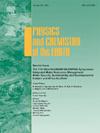土地利用方式对城市雨水径流特征的影响——以印度德里为例
IF 3
3区 地球科学
Q2 GEOSCIENCES, MULTIDISCIPLINARY
引用次数: 0
摘要
目前的研究强调了印度首都德里雨水和雨水径流的物理化学特征,并提出了适合其可重复使用的处理方法。雨水分析表明,酸性离子种类(SO42−和NO3−)被悬浮在大气中的碱性离子种类(Ca2+、NH4+、HCO3−等)中和,导致酸雨(pH <;5.6)在德里上空。同样,雨水径流与地球表面接触时被中和,而地球表面主要覆盖着由地壳起源的冲积性土壤。非海盐组分未显示海洋体对雨水特征的影响。中和因子表明,雨水中碱性离子种类(NH4+、HCO3−、K+、Ca2+和Mg2+)比酸性离子种类(SO42−和NO3−)占优势,导致雨水pH呈碱性。存在大量的营养物(PO43−和NO3−),有可能导致德里淡水水体富营养化。该研究还将雨水径流的质量与印度的饮用水标准进行了比较,表明在水处理过程之后可以再利用,并有助于弥合水的供需差距。此外,建议使用人工湿地作为一种可持续和环保的处理方法来处理雨水径流,并将其储存在德里供进一步的非饮用用途。该研究以联合国可持续发展目标(SDG) 6和11为目标,并与之相联系。本文章由计算机程序翻译,如有差异,请以英文原文为准。

Influence of land use pattern on urban stormwater runoff characteristics: a spatio-temporal case study of Delhi, India
The current study underlines physico-chemical characterisation of the rainwater and stormwater runoff in capital city of Delhi, India, and to suggest the suitable treatment method for its reusability. The analysis of rainwater reveals that acidic ionic species (SO42− and NO3−) are being neutralized by alkaline ionic species (Ca2+, NH4+, HCO3−, etc.) present in suspended form in the atmosphere that resulted in no event of acid rain (pH < 5.6) over Delhi. Similarly, stormwater runoff was neutralized when it came in contact with earth's surface which is majorly covered with alluvial nature of soil that is chiefly of crustal origin. Non-sea salt fraction revealed no contribution of marine bodies that may influence rainwater characterisation. Neutralization factor suggested the dominance of alkaline ionic species (NH4+, HCO3−, K+, Ca2+, and Mg2+) in rainwater over acidic ionic species (SO42− and NO3−) resulting in alkaline pH of rainwater. Presence of nutrients (PO43− and NO3−) in significant concentration which has the potential to cause eutrophication in freshwater bodies of Delhi. The study also compared the stormwater runoff quality with Indian drinking water standards suggesting the potential to reuse following the water treatment process and can help to bridge water supply and demand gap. Also, the use of constructed wetlands is suggested as a sustainable and eco-friendly treatment method to treat stormwater runoff and store it for further non-potable use in Delhi. The study targets and connects with the United Nations's Sustainable Development Goals (SDG) 6 and 11.
求助全文
通过发布文献求助,成功后即可免费获取论文全文。
去求助
来源期刊

Physics and Chemistry of the Earth
地学-地球科学综合
CiteScore
5.40
自引率
2.70%
发文量
176
审稿时长
31.6 weeks
期刊介绍:
Physics and Chemistry of the Earth is an international interdisciplinary journal for the rapid publication of collections of refereed communications in separate thematic issues, either stemming from scientific meetings, or, especially compiled for the occasion. There is no restriction on the length of articles published in the journal. Physics and Chemistry of the Earth incorporates the separate Parts A, B and C which existed until the end of 2001.
Please note: the Editors are unable to consider submissions that are not invited or linked to a thematic issue. Please do not submit unsolicited papers.
The journal covers the following subject areas:
-Solid Earth and Geodesy:
(geology, geochemistry, tectonophysics, seismology, volcanology, palaeomagnetism and rock magnetism, electromagnetism and potential fields, marine and environmental geosciences as well as geodesy).
-Hydrology, Oceans and Atmosphere:
(hydrology and water resources research, engineering and management, oceanography and oceanic chemistry, shelf, sea, lake and river sciences, meteorology and atmospheric sciences incl. chemistry as well as climatology and glaciology).
-Solar-Terrestrial and Planetary Science:
(solar, heliospheric and solar-planetary sciences, geology, geophysics and atmospheric sciences of planets, satellites and small bodies as well as cosmochemistry and exobiology).
 求助内容:
求助内容: 应助结果提醒方式:
应助结果提醒方式:


